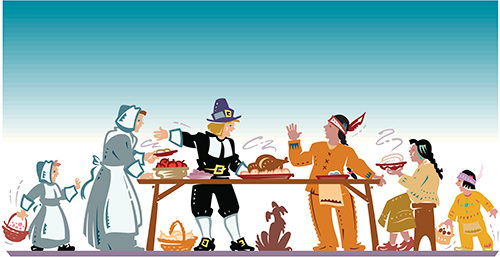



Business Inquiry
Global:
Email:marketing@medicilon.com
+1(781)535-1428(U.S.)
0044 7790 816 954 (Europe)
China:
Email: marketing@medicilon.com.cn
Tel: +86 (21) 5859-1500



Scientists from the Florida campus of The Scripps Research Institute (TSRI), Florida Atlantic University, and Bowling Green State University think they have found a reason for the phenomenon known as “food coma,” the sleepy-like stupor that often comes after eating a large holiday dinner.

Until recently, there has been little more than anecdotal evidence to suggest that food coma is an actual physical condition, and the scientific evidence that does exist is unable to explain why some people fall asleep immediately after eating, some later, and some not at all.
“Different foods play different roles in mammalian physiology, but there have been very few studies on the immediate effects of eating on sleep,” said TSRI’s associate professor William Ja, Ph.D., who led the study (“Postprandial Sleep Mechanics in Drosophila”) published eLife.
Dr. Ja and his colleagues used Drosophila as a model due to the well-documented sleep–metabolism interaction in which flies suppress sleep or increase locomotion when starved. They created a system called the Activity Recording CAFE (ARC), a small plastic chamber that allowed them to record fly activity before and after feeding.
Researchers found that after a meal, flies had increased sleep for a short period before returning to a normal state of wakefulness. Their response varied according to food intake, i.e., flies that ate more also slept more. Further investigation of specific food components showed that while protein, salt, and the amount eaten promoted sleep, sugar had no effect.
“The protein link to post-meal sleep has been mostly anecdotal, too, so to have it turn up in the study was remarkable,” noted Dr. Ja. “In humans, high sugar consumption provides a quick boost to blood glucose followed by a crash, so its effect on sleep might only be observed beyond the 20- to 40-minute food coma window.”
The fact that larger-sized meals increased sleep in fruit flies may also have parallels in human behavior. It’s known that electrical activity increases in the brain with meal size and during certain stages of sleep. Salt consumption also influences sleep in mammals.
Unpublished data suggest that the food coma condition might be a way to maximize gut absorption of protein and salt, two nutrients that flies might prioritize or find limited in nature, according to Dr. Ja.
“Using an animal model, we’ve learned there is something to the food coma effect, and we can now start to study the direct relationship between food and sleep in earnest,” he continued. “This behavior seems conserved across species, so it must be valuable to animals for some reason.”
The study also found some intriguing physiological reasons behind after-meal fly napping.
“By turning on and off neurons in the fly brain, we identified several circuits dedicated to controlling postprandial sleep,” said TSRI graduate student Keith Murphy, the first author of the study. “Some of these circuits responded to protein and others to circadian rhythm, demonstrating that the behavior has a diversity of inputs.”
 Relevant
news
Relevant
news